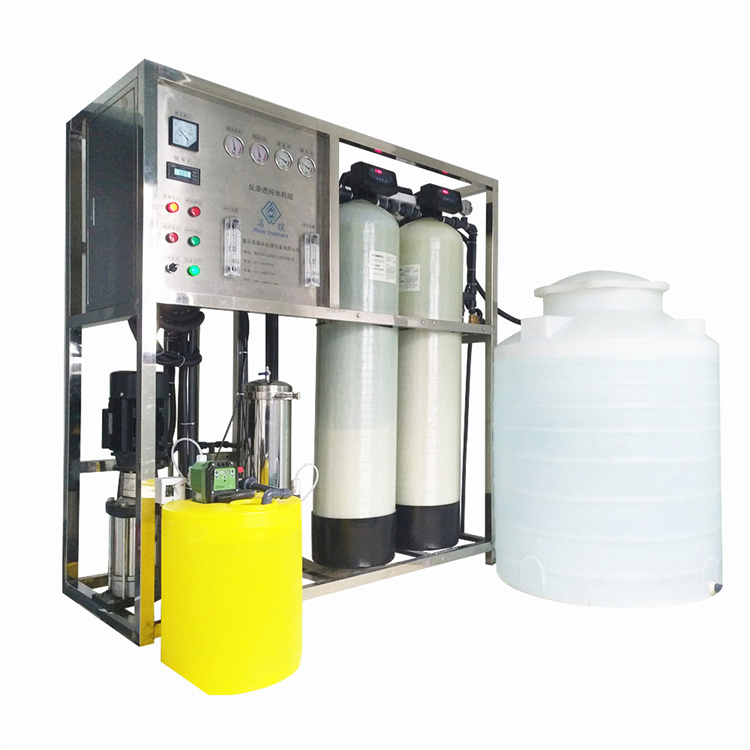How does Reverse Osmosis work?
Reverse osmosis works by using a high-pressure pump to increase the pressure on the salt side of the RO
and force the water across the semi-permeable RO membrane, leaving almost all (around 95% to 99%)
of dissolved salts behind in the reject stream. The amount of pressure required depends on the salt concentration of the feed water. The more concentrated the feed water, the more pressure is required to overcome the osmotic pressure.
In very simple terms, feed water is pumped into a Reverse Osmosis (RO) system and you end up with two types of water coming out of the RO system: good water and bad water. The good water that comes out of an RO system has most contaminants removed and is called permeate. Another term for permeate water is product water. Permeate is the water that was pushed through the RO membrane and contains very little contaminants. RO system sizes are based on permeate flow. A 100 gpm RO system implies that the RO system will produce 100 gpm of permeate water. The ‘bad’ water is the
water that contains all the contaminants that were unable to pass through the RO membrane and is known as the concentrate, reject, or brine. All three terms (concentrate, reject, and brine) are used interchangeably and mean the same thing.
As the feed water enters the RO membrane under pressure (enough pressure to overcome osmotic pressure) the water molecules pass through the semi– permeable membrane and the salts and other contaminants are not allowed to pass and are discharged through the concentrate stream. The concentrate goes to drain or can be fed back into the feed water supply in some circumstances to be recycled through the RO system to save water. The water that makes it through the RO membrane is called permeate or product water and usually has around 95% to 99% of the dissolved salts removed from it.

It is important to understand that an RO system employs cross filtration rather than standard dead-end filtration where the contaminants are collected within the filter media. With cross filtration, the solution passes through the filter, or crosses the filter, with two outlets: the filtered water goes one way, and the contaminated water goes a different route. To avoid a buildup of contaminants, cross flow filtration allows water to sweep away contaminant build up and allow enough turbulence to keep the membrane surface clean.




 Brackish Water Reverse Osmosis Treatment System
Brackish Water Reverse Osmosis Treatment System Large RO Desalination Machine
Large RO Desalination Machine Ultrafiltration System vs. Reverse Osmosis System: Which One Should You Choose?
Ultrafiltration System vs. Reverse Osmosis System: Which One Should You Choose? Ultrafiltration (UF) Water System
Ultrafiltration (UF) Water System Containerized Reverse Osmosis Water Treatment Plant
Containerized Reverse Osmosis Water Treatment Plant Large Scale Industrial Reverse Osmosis System
Large Scale Industrial Reverse Osmosis System How to Choose Water Purifier for Well Water
How to Choose Water Purifier for Well Water What Machine Can Remove Salt From Seawater?
What Machine Can Remove Salt From Seawater?